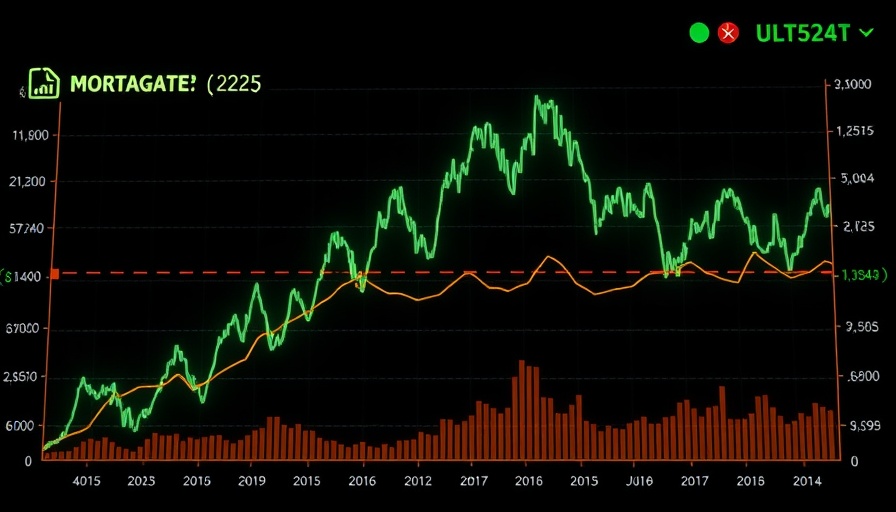
Understanding Mortgage Rates and Their Recent Behavior
The latest dip in mortgage rates, as seen on August 27, 2025, can influence a myriad of factors for both potential homeowners and seasoned investors. The average mortgage rate for a 30-year fixed loan is now resting at 6.51%. This marks a technical record low in 2025, following a steady decline from the previous month. The current rate is notably lower than the highs experienced in late 2024, where rates reached 6.26% on October 3rd.
The Role of Economic Reports in Rate Movements
One of the key drivers behind these recent shifts in mortgage rates has been the release of economic data, particularly from the jobs report on August 1st. This report did not only reveal insights into job growth but offered a broader perspective on the economic stability which, in turn, impacts interest rates. Following the report, the rates have fluctuated only slightly, indicating a stagnation period—one possible interpretation being a reluctance among lenders to adjust rates sharply due to uncertain market conditions.
Market Trends: A Glance into the Future
Looking forward, the low mortgage rates are likely to entice more buyers into the market. As homeowners reassess their current financial situations, many may consider refinancing, given the historically lower rates available. However, potential buyers should proceed cautiously, as economic indicators beyond mortgage rates, such as inflation and job growth, are critical in forecasting market movements. Analysts have also pointed out that if the economy continues on its current trajectory, further decreases in mortgage rates may not be out of the question.
Implications for Homebuyers and Investors
With mortgage rates hovering at this historically low point, homebuyers are presented with unique opportunities. First-time buyers, in particular, may find this an ideal moment to enter the housing market. The financial implications of a lower interest rate can lead to significant savings over the life of a mortgage, which in turn, enhances purchasing power. For investors, understanding these current trends is also crucial as it could dictate the viability of new project financing or property acquisitions.
Counterarguments: The Risks of Bouncing Back
While the current rates seem favorable, caution is necessary. A potential rise in rates can reestablish the barrier for many prospective buyers who may not be prepared for increased monthly payments. Moreover, should inflation continue to rise, central banks might respond with interest rate hikes, which could lead to abrupt changes in the mortgage landscape. Therefore, buyers should have a comprehensive understanding of their financial stability and seek guidance before committing to any new mortgage product.
Conclusion: Are You Ready to Make a Move?
The recent decline in mortgage rates is significant and may represent a turning point for many consumers and investors alike. If this trend continues, the housing market may see an uptick in activity. Those contemplating buying or refinancing should familiarize themselves with the ongoing trends and predictions within the financial market. It's essential to take informed steps that could greatly benefit personal financial situations. Now might just be the time to explore options available to you—consider engaging with financial experts to navigate this evolving landscape effectively.
 Add Row
Add Row  Add
Add 




Write A Comment